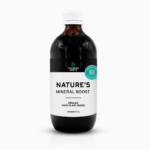
I’ve been away for the past 3 weeks, cooking occasionally for myself but also needing to eat out. When I get home I have a hankering to make food.
The first thing I have to do is go out shopping to my local food stores and markets to get food, then when I get home my kitchen is a buzz with the thermomix, cupboards and fridges being opened and closed and my fan forced oven running non stop. I was looking through Tanya Hubbards cookbook, Gluten Free Grain Free, and found a recipe which I hadn’t tried. I looked in my cupboard for all the ingredients and I was missing one – dried dates. I had plenty of fresh dates but no dried, so I got back in my car to get them.
I went to five shops in my local area and no one had them, if they did have them they had an oil on them. So I figured my only other choice was to drive 15km to one of my organic food stores or go to Woolworths just down the road and look in the Macro section. I decided to to go Woolworths.
I do not believe that there are any accidents in life, I chose Woolworths over Forest Glen, which I would normally not do – for a reason. There was one lot of dried dates left on the shelves, I picked them up, but I needed more, so I went to the other section where dates are in the grocery store to see, just in case there may be another brand that does not have oil on the dates. I picked up the only other brand in the store, which was the home brand. Turned the package over and read the ingredients; dates and palm oil, ‘bugger’, I thought! Then I realised that I had not read the ingredients of the macro dates, turned the package over and, blow me down, the ingredients were: dates and palm oil, with no organic certification (Macro brown packaging is usually about being natural not organic). As you can imagine I saw red!
Not red dates just red!
Macro was a wonderful store in a few select places around Australia just a few years back and was bought out by Woolworths. Woolworths closed all the stores but kept the brand name. The dried fruits and nuts are packaged in different places around Australia, but one is Trumps in Brisbane. I called Trumps in Brisbane to ask if they packed home brand dried fruits and nuts – there was silence at the other end. Then I was asked why I wanted to know? As I began to explain she said ‘Oh we only pack Macro’. I just thought it was a little strange that she wasn’t happy to be upfront about the packing of home brand (if they indeed do this) but was quick to say Macro. You can make your own decision on this one. When I asked Woolworths if they were the same product they told me no, but it is a date and there is palm oil added.
I also posted this whole thing on my Facebook page as well as on the Woolworths Facebook page, the response was remarkable 100’s of shares and posts. Firstly I’m upset that home brand and macro seem to be the same product, although Woolworths deny this. I’m also annoyed that they put an oil on the dates for Macro – this is meant to be their healthy brand, I expect it with home brand and I’m annoyed that they use palm oil, especially with all the controversy about palm oil.
I know that this might sound trivial in the whole scheme of things, but when we pay attention to the detail then collectively they become big factors to pay attention to – for health. Following is all the information you need to know about dried fruit, what they add to it without putting on the label and how to find the best dried fruit.
Dried fruit seems to be a popular snack food for young children, and adults.
It conjures up the image of a healthy alternative to sweets. You’ll find piles of dried fruits in the health food stores, and from that we assume that it’s a healthy food. But is it?
The history of dried food goes back to our hunter-gatherer ancestors. When fresh foods were abundant, our ancestors would dry their excess food so that they had something to eat when the winter months came and food was scarce.
The food was usually reconstituted with water before it was eaten.
With food so abundant these days, we don’t need to use dried fruit as a survival food source, but we consume it as a convenient snack. This is OK if it’s done occasionally, but some people are eating dried fruit up to six times a day. For example, breakfast might be sultana bran or muesli, then some fruitcake for morning tea. Lunch might be a few slices of raisin toast, followed by some dried apricots in the afternoon and a dessert of plum pudding at night. Perhaps that’s a little exaggerated, but I often see well-meaning parents give their children dried fruit constantly throughout the day.
Dried fruit is very hard to digest. Any parent who’s been confronted by a nappy full of blown-up sultanas can attest to that! For these foods to be properly digested and assimilated by our bodies, it’s important to add water. If water isn’t added before you eat dried fruit, then your body has to add the water when the fruit reaches your stomach. This can dehydrate the body, and means by the time the dried fruit has become a real food again, it’s already on its way out of your body before it can do any good.
Unless you’re only going to eat a very small amount of dried fruit, I suggest you quickly boil it then leave it to soak in the water overnight.
Isn’t it frustrating when you think you’ve been doing the right thing by eating a healthy alternative, and then I go and ruin it? Sorry, but wait till I tell you what they add to your dried fruit – it’ll blow your socks off!
There are several things added to dried fruit, either during the drying process or after, and they’re not necessarily on the food label. They are (get ready!) sugar, dextrose, glucose syrup, fruit juice, colouring derived from fruit, glycerin (422), sorbic acid (200), sulphur dioxide (220), paraffin, edible fats, and oils. Oil is sometimes marked on the ingredients.
By the way, a quick way to tell if oil has been added is to look for a shiny, greasy appearance to the dried fruit. If oil hasn’t been added, it will look dusty. And if oil is there, you can be sure that BHA (320) is also there.
Many different oils are being used in dried fruit, sometimes there may be a vague ingredient term such as vegetable oil, this could indicate a number of combined oils such as soy, canola or other inferior refined oils. I’ve noticed of late palm oil is being used and this does not go without any controversy as to the ethics and sustainability of this product regarding rainforest destruction and the animals and species that live within the rain forests. For an oil to be preserved it may need to be hydrogenated, fractionated or interesterified, none of these terms are ever seen on the packaging of dried fruit. The best way to avoid the processes or the oils is to read the ingredient of your dried fruit and make sure there are no other ingredients other then the fruit itself. If you are unsure you can always call the company.
Good dried fruit (with nothing added) looks vastly different from the stuff you see on the supermarket shelves. Some of the effects these additives can have on humans include headaches, thirst, nausea, high blood sugar levels, skin irritations and irritations of the digestive tract, to name just a few.
So what’s the alternative? Try to buy organic, naturally dried fruit. Or, dry your own. Food dehydrators are easy to find. Or on a hot dry day you can cut some fruit up thinly, place it on a metal tray or sheet, and dry it in the sun. Or you can pop the fruit into a convection oven on a very low heat for three hours or so. But remember that (even with natural, healthy dried fruit) it shouldn’t be a constant food source. Eat your dried fruit occasionally and in moderation.
Action steps
1
Choose dried fruit that has been naturally dried – you will know by the colour.
2
Try to find organic dried fruit.
3
Remember, dried fruit is a treat – not a food source.
The above information may be familiar to some of you, as it has been adapted from my Changing Habits, Changing Lives book.
Cyndi O’Meara
P.O. Box 104
Mooloolaba Q 4557
International Speaker, Best Selling Author, TV and Radio Presenter.
Awesome results gained from the 21 day healthy weight loss challenge. To
obtain this weight loss information go to www.changinghabits.com.au today!








Palm oil was the listed oil when I first started buying Macro dates. I thought good , this is a healthy oil as all other dates had vegetable oil listed on the packet. Husband went to buy Macro dates for me today and oh my gosh, now they are using Cottonseed oil. I don’t know how long this has been going on but we eat only my homemade cookies using Macro dates. This toxic crap is probably why our pain levels are through the roof. Will be contacting Macro and letting them know what I think of their change. Surely the palm oil people can grow more to cope with needs.
Hi Rhonda, Thank you for letting us know! Yes they can be quite sneaky and change the ingredients without you knowing it, especially if it’s saving them money. that’s why it’s so important to constantly read the ingredients. Just letting you know Changing Habits do sell 100% pure organic dates if you were in need of another source. There is more information on the changing habits website about them if you’re interested.
Thankyou so very much for your article! Unfortunately I have been an avid sultana eater ALL my life, as I consume handfuls of sultanas throughout the day, it is my go to emotional snack, and it is a habit! My teeth have of course suffered but have only started to look into the added oils as I have not been able to lower my cholesterol. I think it is now time to attempt to stop my sweet addiction! Thankyou again for the information.
Thanks Simone, glad you found the information useful 🙂